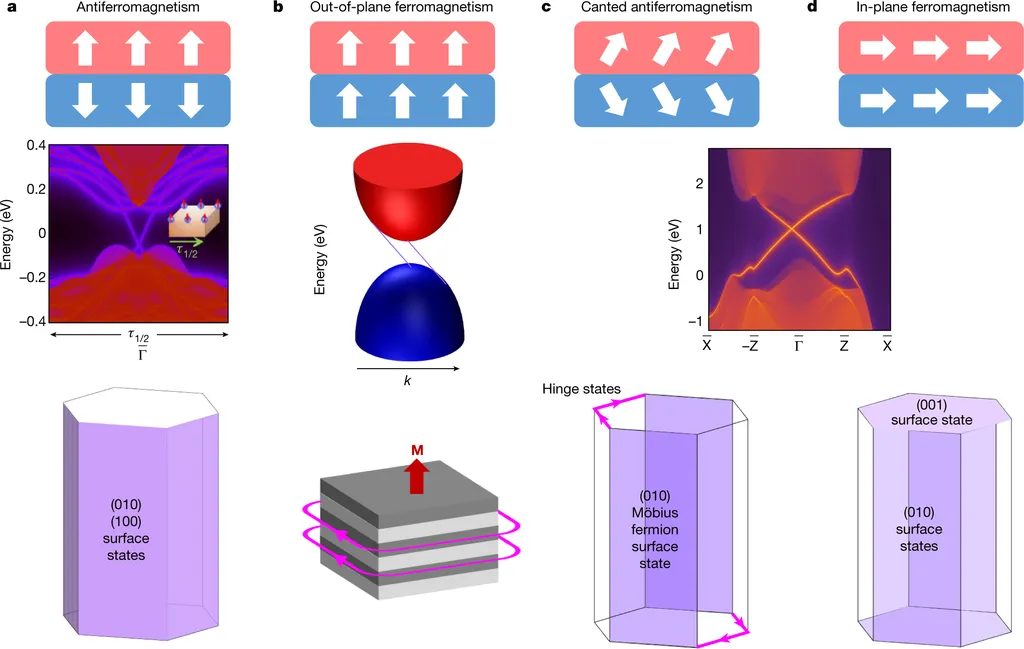In a groundbreaking development, researchers have demonstrated the ability to manipulate the topological band structure of a magnetic material using external magnetic fields. This discovery, led by Dr. Florian Schilberth from the Experimental Physics V group at Augsburg University, opens new avenues for controlling and understanding exotic quantum phenomena, with potential implications for the energy sector.
The study, published in the journal ‘npj Quantum Materials’ (which translates to ‘npj Quantum Materials’ in English), focuses on the compound Co3Sn2S2, known for its unique magnetic properties. By applying magnetic fields, the researchers observed a redshift in the nodal loop resonance, a key feature of the material’s electronic structure. “We were able to rotate the magnetization into the kagome plane and directly observe the changes in the band structure,” explained Dr. Schilberth. This manipulation revealed the emergence of a gapless nodal loop and the creation of Weyl points, exotic quasiparticles that could have significant implications for future technologies.
The ability to control topological features with external fields is a significant advancement. Topological materials are known for their robust surface states and unusual transport properties, which are protected by the material’s underlying topology. However, the experimental manipulation of these features has been limited until now. “Our findings show that breaking crystal symmetries with external fields provides an efficient way to manipulate topological band features,” Dr. Schilberth noted. This could lead to the development of new materials and devices with enhanced properties, potentially revolutionizing fields such as energy storage and quantum computing.
The research also highlights the potential of low-energy magneto-optical spectroscopy as a tool for probing variations in quantum geometry. This technique allows scientists to observe changes in the electronic structure of materials with high precision, providing valuable insights into their behavior under different conditions. “This method gives us a powerful way to study the intricate details of topological materials and understand how they respond to external stimuli,” Dr. Schilberth added.
The implications of this research extend beyond fundamental physics. In the energy sector, the development of materials with tailored topological properties could lead to more efficient energy storage solutions and advanced electronic devices. For example, the ability to control Weyl points and nodal loops could pave the way for novel energy conversion technologies, enhancing the performance of solar cells, batteries, and other energy-related applications.
Moreover, the findings could have broader impacts on the development of quantum technologies. Topological materials are considered promising candidates for quantum computing due to their robust quantum states. By manipulating these states with external fields, researchers could potentially develop more stable and efficient quantum bits (qubits), the building blocks of quantum computers.
As the field of topological materials continues to evolve, this research provides a crucial step forward in understanding and controlling their unique properties. The ability to manipulate topological features with external fields opens up new possibilities for the design and development of advanced materials and devices, with far-reaching implications for the energy sector and beyond. “This is just the beginning,” Dr. Schilberth remarked. “We are excited to explore the full potential of these materials and their applications in the future.”

